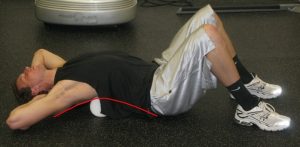Thoracic Spine Mobility:
So, what are the best ways to improve Thoracic Spine Extension? There are a variety of ways. If you have the manual skills, there are manual mobilizations. If you have access to a good Chiropractor, they can make some dramatic improvements with some good manipulations.
At MTS, we prefer to combine therapeutic techniques to take advantage of everything we have at our disposal. But, as a general rule, we choose to empower our athletes to make corrections on their own through self mobilizations. This allows for them to perform home exercises to make smaller, more frequent improvements. It also allows for less hands on work for he clinician and better use of their time.
The self mobilizations can be divided into 2 basic categories:
Passive Mobilizations
Active Mobilizations
Each has their own advantages and can be used either by themselves or in conjunction with other treatments.
Passive mobilizations are very simple and easy for our athletes to learn and implement on their own. It is also a great way for bigger, less mobile athletes to get a good mobilization. What we find is that many of our larger football players who are bound up tend to struggle with active mobilizations because they struggle to activate the needed musculature enough to make the mobility changes we are looking for.
Some examples of passive mobilizations are:
Foam Roll Thoracic Spine Extension

Using a foam roll, place it at the level approximately T-11 to T-12. Bend the knees and keep the feet flat and hips on the floor. Place the hands behind the head and relax the shoulders back over the foam roll.

Make sure the foam roll is placed in the proper place on the spine. If it is too low, you are simply evaluating lumbar spine extension (which most athletes with a T Spine extension restriction have too much of because of compensation). If it is too high, you won’t see any movement. The pivot point for the T Spine is actually at the bottom of the T Spine in the range of the 11th or 12th vertibrae.

TRX® Rip Trainer™ Thoracic Spine Extension
Place Rip Trainer™ handle through the foot cradles on the TRX® Suspension Trainer™ as wide as possible. Stand tall with hands behind head and bar positioned approximately T11-T12 with feet slightly in front of the center of mass. Lean back against the bar to allow gravity to assist the movement. Exhale deeply and relax shoulders back over the bar. Once again, make sure the bar is placed on the spine in the correct spot (T11-T12).
Active Mobilizations are typically our self mobilization of choice. This is because not only are you mobilizing the spine, but you are retraining the nervous system. This trains the body to use the new range of motion that it recently gained through the mobilization. When it is done in this way, the mobility gains will be maintained much better and longer between treatments. Below is just one example of an active mobilization technique.
Begin with your athlete sitting tall against a wall. One of the keys to this movement is keeping the entire spine in contact with the wall throughout the exercise. Rest the dowel on the top of the head and grasp it so that the elbows and shoulders are bent at 90 degrees. Place the bottom of the feet together in a “butterfly” position.

Begin the movement by pressing the hands up the wall. Keep the wrists, elbows, and shoulders in contact with the wall as the athlete presses the dowel upward. While pressing upward, simultaneously push the knees to the floor. If at some point, the wrists or elbows comes off of the wall, stop moving the bar vertically and simply go as far as they can with the main contact points touching the wall.
Learn more about how the Thoracic Spine affects other movements:
- Shoulder Health
- Shoulder Performance
- Overhead Movements
- Sport Specific Movements
- Overall Spinal Health
Learn about mobility of the T-Spine:



Leave a Reply